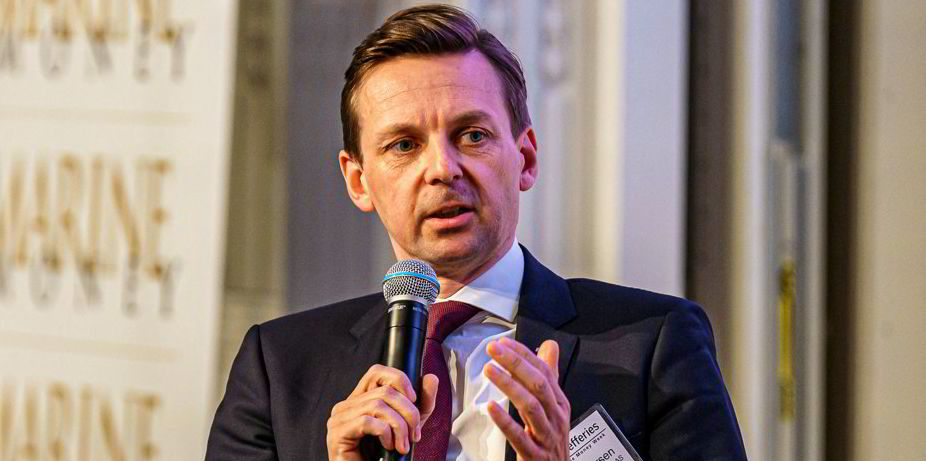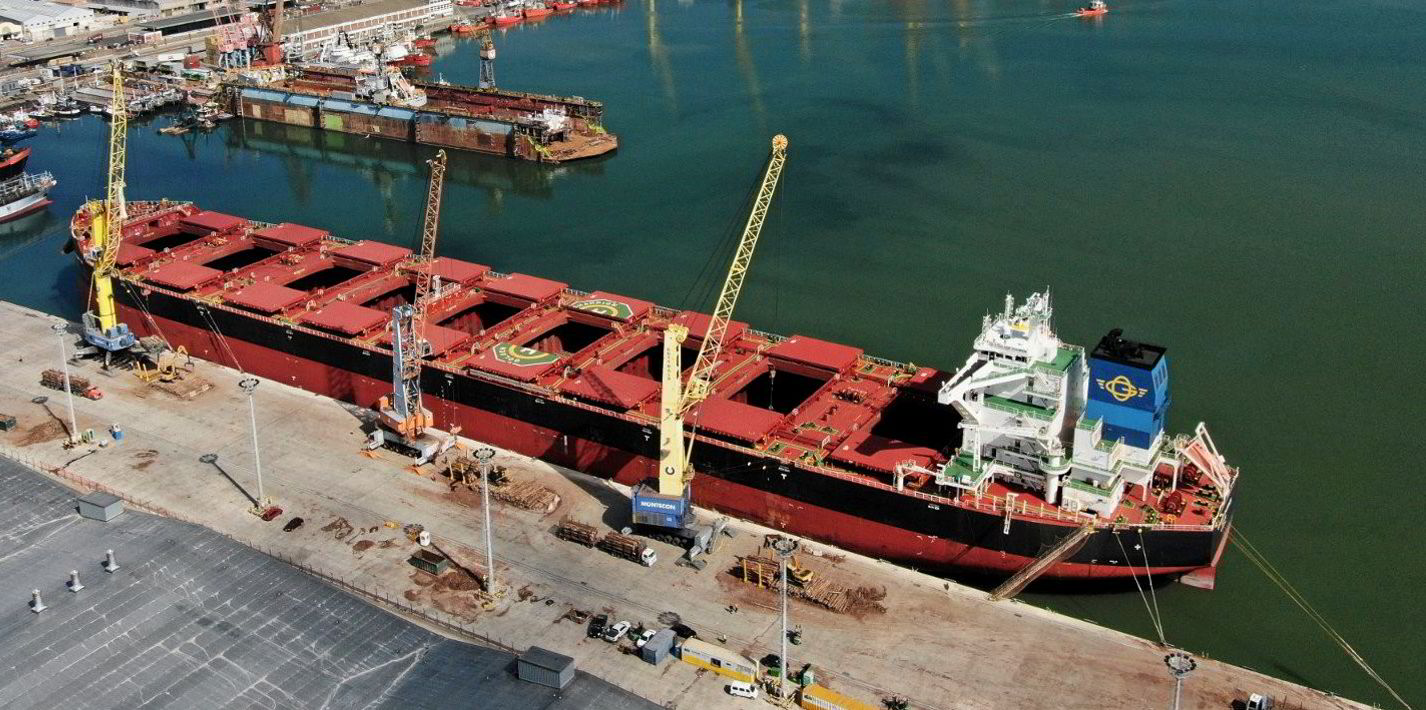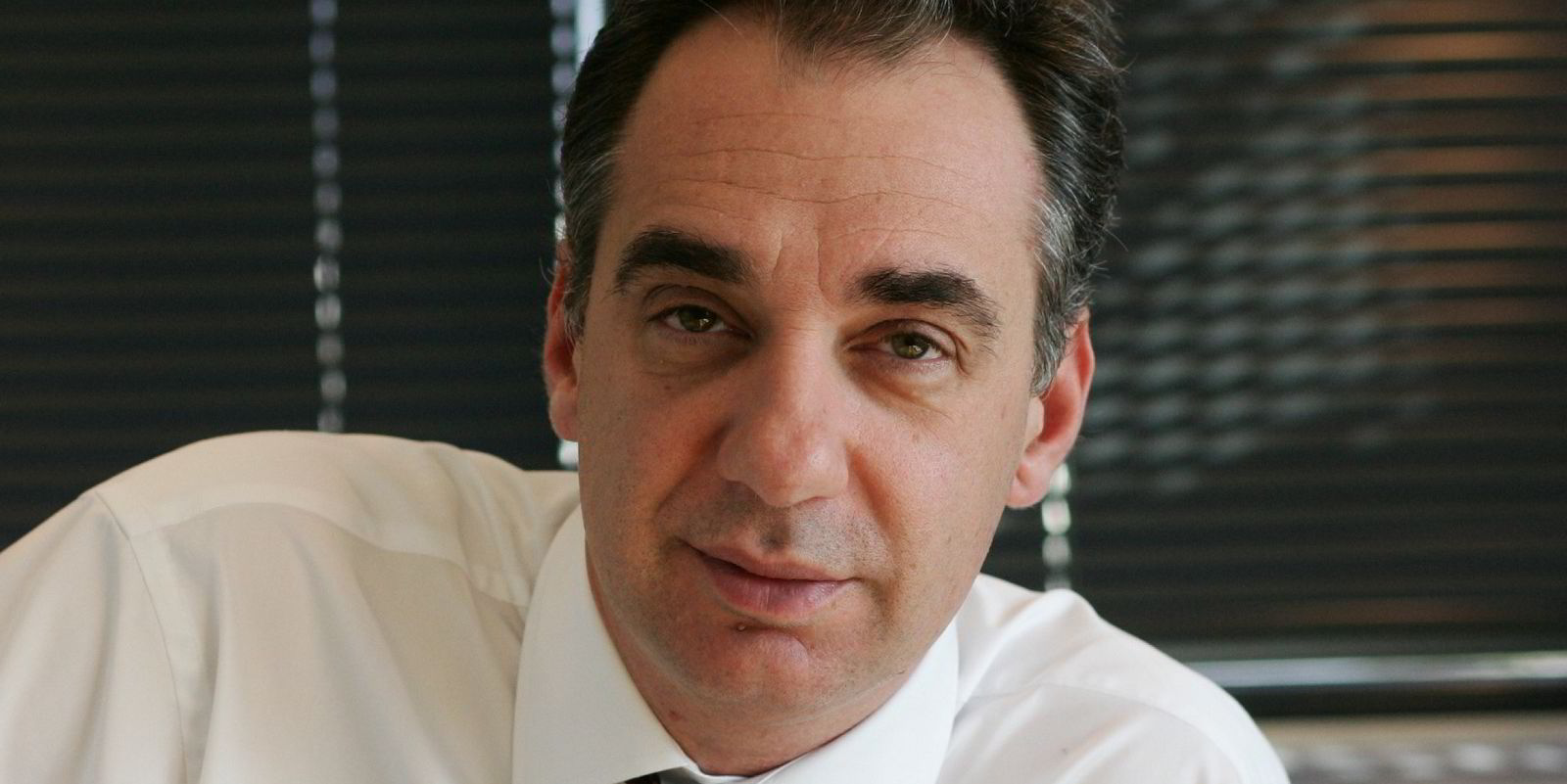The Golden Ocean Group announced on Monday that it has become the world’s biggest publicly listed dry bulk company in terms of deadweight tonnage, after agreeing to acquire a sextet of newcastlemaxes.
The John Fredriksen-controlled outfit said it will spend $291m on the modern, scrubber-fitted 208,000-dwt ships, which it did not identify.
Chief executive Ulrik Andersen told TradeWinds on Monday that Golden Ocean’s time in the top spot may be short lived — the overarching strategy is to keep selling vessels.
“We did the deal because it was attractive and will benefit our shareholders. Not because we want to be the largest in the world. That will never be a goal in itself,” he told TradeWinds.
“We continue our strategy of selling older tonnage to raise capital for new ships, decarbonise and be in the best possible position to tackle future regulations and charterers’ requirements.”
The seller has not yet been disclosed. According to VesselsValue, three companies currently own or manage exactly six scrubber-fitted newcastlemaxes: 2020 Bulkers, Formosa Plastics Marine Corp and South Korea’s H-Line Shipping.
Chinese leasing players, Foremost Maritime Corp, Maran Dry Management, Berge Bulk, Japan’s NS United Kaiun and Oldendorff Carriers are listed with more.
Fearnley Securities understands the ships are all Chinese built: five in 2020 and 2021, and the other in 2017, with an average age of roughly 2.5 years. According to the VesselsValue data, that information matches with the H-Line fleet.
Golden Ocean said the six vessels will be chartered back to their former owner, an unrelated third party, for about 36 months at an average daily time charter equivalent rate of around $21,000 net.
Top dog
“This acquisition cements our position as the largest owner of modern capesize vessels,” added the company, which is listed in Oslo and New York.
The deal is not just big for the company in terms of size but also quality, according Andersen.
“It … increases our fleet’s fuel efficiency and reduces its emissions profile as we continue to make progress toward our 2030 emission-reduction target of 30%,” he said.
The vessels acquired will comply with all environmental regulations beyond 2030, said Andersen. His company grasped the opportunity to buy them in what it described as a “short-term weakness in asset prices”.
The acquisition will not harm Golden Ocean’s capacity to pay dividends, he said.
The deal will be financed with cash on hand but mostly through a new $233m credit facility secured against the six acquired vessels, plus a pair of existing Golden Ocean ships that are not currently encumbered by debt.
Andersen described this arrangement as moderately leveraged.
Golden Ocean anyway sits on $124m of net proceeds generated from the sale of 11 older vessels over the past two years, he added.
“These proceeds are sufficient to fund the majority of the expected equity required, based on conservative debt financing assumptions, for the 10 kamsarmax newbuildings currently under construction as well as the six newly acquired vessels,” Andersen said.
The purchase brings Golden Ocean’s owned or controlled fleet to 99 bulkers with an average age of about six years.
Fearnley Securities said the sextet has a value of $335m when adding scrubbers worth $2.8m each.
It sees the acquisition as in line with the company’s strategy of adding tonnage through the balance sheet and said it should add to dividend potential.
Its analysts estimate cash breakeven to be in the range of $15,000 to $16,000 per day.
A refinancing could be undertaken further down the line to bring the ships closer to the owner’s breakeven figure of $14,000 to $14,500 per day, they said.
The investment bank argues that bulker asset values have bottomed out, and rates are expected to improve throughout the year.





